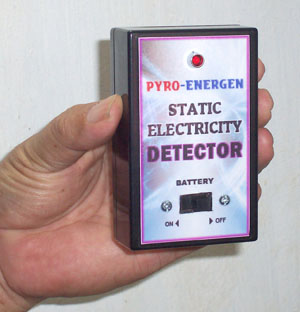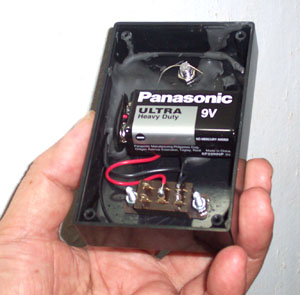Static Electricity / Negative Ion Detector
We have received several requests and inquiries from PYRO-ENERGEN users as well as our PYRO-ENERGEN distributors where they can find a static electricity detector to know and to prove the presence of negative static electricity.
To answer and to prove these questions as well as the PYRO-ENERGEN theory, Mr. Takano constructed an easy to operate negative static electricity detector for PYRO-ENERGEN users as well as school students to know the presence of static electricity created by rubbing plastics and other materials.


You can check the presence of static electricity on the surface of a plastic, just like the illustration below.

How Does the Negative Static Electricity Detector Work
Our surroundings on earth are positively charged, especially under high-tension power lines, including when our body is attracted by the origin of diseases, negative energy. Thus, when you switch on the PYRO-ENERGEN Negative Static Electricity Detector, it will light up in red immediately. You can hold it with your bare hand, and while you're being treated with PYRO-ENERGEN, the red light will turn dark. It means that you are surrounded by negative static electricity.
If you are using the negative air ionizer, the detector will indicate no red light. It means that your room is full of negative ions.
Try to comb your hair or rub a plastic sheet with a cloth, and bring the negative static electricity detector near it, the detector will not light up. It means that negative ion or negative static electricity is present.
Rice farmers are happy to hear thunder sounds and lightning. When lightning strikes on earth, its phenomena in the cloud is similar to the negative static electricity the PYRO-ENERGEN is producing. Negative static electricity produces more crops in that year.
School student can learn more about negative static electricity by rubbing different materials with NEGATIVE STATIC ELECTRICITY DETECTOR.




